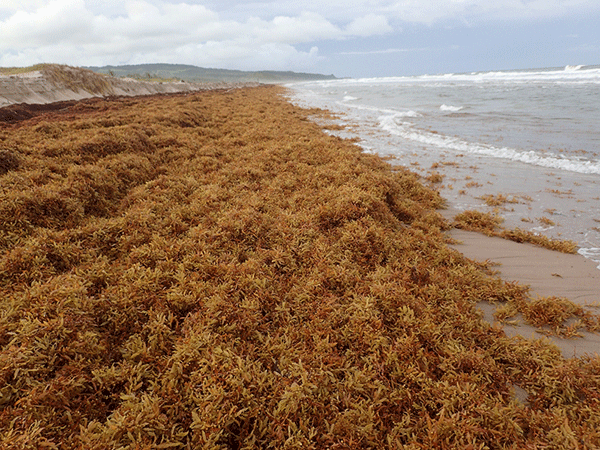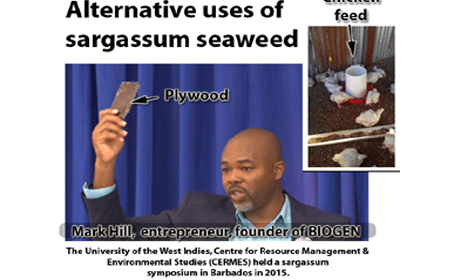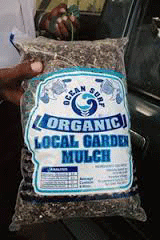BELIZE CITY, Fri. Jan. 10, 2016–Across the Caribbean, the mysterious invasion of the Sargassum seaweed has for the past 4 years had disruptive impacts on both fisheries and tourism, but the phenomenon which was first seen as a bane because of its adverse impacts has, conversely, fueled a boon for enterprising persons who have found innovative ways to exploit the explosion of the weed.
“The Sargassum situation is a challenge for all of us in the region. We first had a massive inundation of Sargassum seaweed in 2011. For 2012, 2013 we did not have much. 2014 we had a little more and last year it was a major problem throughout the Caribbean region—massive problem,” Milton Haughton, executive director of the Caribbean Regional Fisheries Mechanism (CRFM), told the media on Thursday.
In explaining the origin of the seaweed which has inundated the Caribbean, Haughton said: “…based on the scientific information that we and our partners have been able to gather, we know that the Sargassum is coming from, not the Sargasso Sea as was initially thought, but an area in the Atlantic, just in the southern Atlantic.”
Climate change is one of the key factors which he said are driving the phenomenon—but not the only one, Haughton explained.
“It seems clear that this is associated with climate change but also with other factors such as nutrient enrichment in the ocean,” he said.

He added that with the elevated temperatures and high nutrient levels, the Sargassum seaweed proliferates.
According to Haughton, “…they drift across and come to the Caribbean region, as well as into Africa because the phenomenon we experience in the Caribbean was taking place not just in the Caribbean but in the Caribbean and Africa at the same time.”
The end result, he said, is “a massive, massive ocean-wide phenomena…[and] it has been very disruptive to our fishers,” and, he noted, the devastation has been most pronounced “…particularly in the Eastern Caribbean where they had really, really massive quantities, in some cases nearly as high as this building, coming ashore…”
“The fishing boats have not been able to go out. Some fish species have been absent completely and then we have quantities of other species appearing, in some cases juveniles. And some fishermen have been able to go and catch some of these juveniles,” he said.
Haughton said that rotting weeds also disrupt tourism activities and the nesting and life cycle of sea turtles, which have difficulty finding their way to the shore.
Although in many instances there have been negative impacts on tourism and on fisheries, there are also positive effects, including new opportunities for economic benefits where the resources are available to turn the seaweed into saleable by-products, ranging from very simple ones, such as mulch, to more complex ones – such as building materials and even soap.

 “…Sargassum is not very new. It’s not new to people involved in the marine industries. In the Gulf of Mexico, for example, they’ve been having problems with Sargassum seaweed for many years and they have developed technologies and ways of utilizing it beneficially, using it as fertilizers and a number of other things. It can be used to make compressed wood for example in construction and there are a host of other possible uses,” Haughton explained.
“…Sargassum is not very new. It’s not new to people involved in the marine industries. In the Gulf of Mexico, for example, they’ve been having problems with Sargassum seaweed for many years and they have developed technologies and ways of utilizing it beneficially, using it as fertilizers and a number of other things. It can be used to make compressed wood for example in construction and there are a host of other possible uses,” Haughton explained.
This will require further monitoring of the Sargassum to determine its pattern of appearance and growth in the region – and to determine whether the seaweed will be available often enough and plentifully enough to justify investments in utilizing it for economic benefit.
Either way, though, the region must must—like it did when it turned the invasive and venomous lionfish into the newest delicacy—find a way to adapt.
